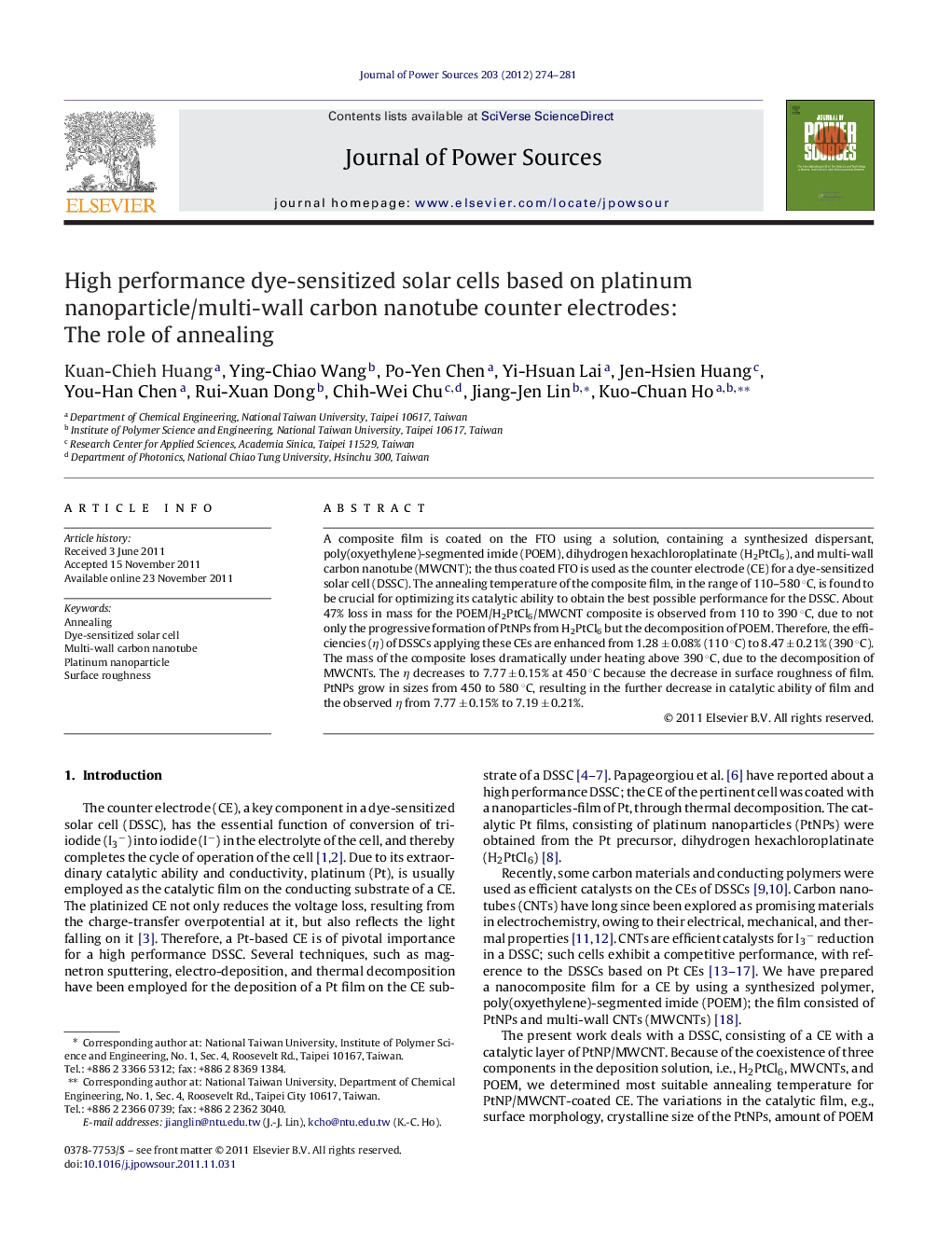| Article ID | Journal | Published Year | Pages | File Type |
|---|---|---|---|---|
| 1288364 | Journal of Power Sources | 2012 | 8 Pages |
A composite film is coated on the FTO using a solution, containing a synthesized dispersant, poly(oxyethylene)-segmented imide (POEM), dihydrogen hexachloroplatinate (H2PtCl6), and multi-wall carbon nanotube (MWCNT); the thus coated FTO is used as the counter electrode (CE) for a dye-sensitized solar cell (DSSC). The annealing temperature of the composite film, in the range of 110–580 °C, is found to be crucial for optimizing its catalytic ability to obtain the best possible performance for the DSSC. About 47% loss in mass for the POEM/H2PtCl6/MWCNT composite is observed from 110 to 390 °C, due to not only the progressive formation of PtNPs from H2PtCl6 but the decomposition of POEM. Therefore, the efficiencies (η) of DSSCs applying these CEs are enhanced from 1.28 ± 0.08% (110 °C) to 8.47 ± 0.21% (390 °C). The mass of the composite loses dramatically under heating above 390 °C, due to the decomposition of MWCNTs. The η decreases to 7.77 ± 0.15% at 450 °C because the decrease in surface roughness of film. PtNPs grow in sizes from 450 to 580 °C, resulting in the further decrease in catalytic ability of film and the observed η from 7.77 ± 0.15% to 7.19 ± 0.21%.
► A PtNP/MWCNT CE is prepared using a home-made poly(oxyethylene)-segmented imide. ► Catalytic abilities of PtNP/MWCNT CEs are affected by the annealing temperatures. ► The annealing temperature for the PtNP/MWCNT CE is studied from 110 to 580 °C. ► An efficiency of a DSSC applying a PtNP/MWCNT CE annealed at 390 °C reaches 8.47%.
